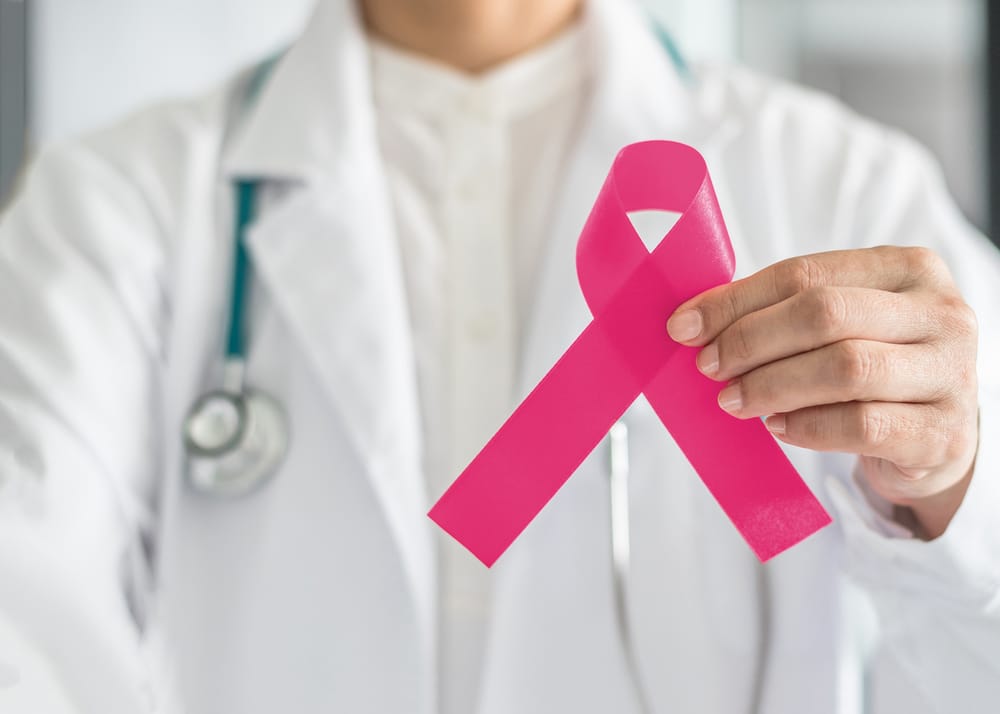
National Breast Cancer Awareness Month
Breast cancer is the most commonly occurring cancer in women worldwide, and it’s also the second most common cancer among the general population. Due to its prevalence, nearly everyone has known someone who has developed breast cancer, which makes the disease an especially personal and distressing phenomenon.
During National Breast Cancer Awareness month, we take a comprehensive look into the most pressing concerns about breast cancer, including causes and prevention, signs and symptoms, testing for gene mutations and which type of surgery may be right for you.
Read on to ensure you have all the facts you need to make informed decisions and take action regarding your breast health.
Breast Cancer Causes and Prevention
Although experts have been unable to determine one precise cause of breast cancer, there are certain risk factors that have been established. This includes birth control use, estrogen levels, age at first childbirth, and smoking.
Women who face the highest risk of developing breast cancer are those of advancing age (postmenopausal) combined with a family history of breast cancer. Yet there are still plenty of women in this risk group who never develop the illness.
Since it is very difficult to pinpoint any one risk factor, the best way to approach breast cancer awareness is by conducting monthly self-examinations and staying alert for any signs and symptoms of the disease.
Breast Cancer Symptoms and Screenings
There are many different symptoms of breast cancer, and they are not the same for everyone. However, the most common signs are:
- A lump, hard knot, or thickening in one area of the breast or in your armpit area
- Swelling of all or just part of the breast (even if no distinct lump is felt)
- Skin irritation or dimpling (sometimes resembles an orange peel)
- Breast or nipple pain, especially new pain in one spot that doesn’t go away
- Nipple retraction (turning inward)
- Redness, scaliness, or thickening of the nipple or breast skin
- Nipple discharge (besides breast milk)
If you notice any of these symptoms, or other changes in your breasts, make an appointment with your doctor immediately for further testing and diagnostics.
Types of breast cancer screenings
Health care providers use three tests to screen for breast cancer. The screening your doctor will recommend for you often depends on your specific symptoms and medical history:
Mammogram – The most common screening test for breast cancer, a mammogram x-rays your breasts. It may find tumors that are too small to feel, or locate abnormal cells in the lining of the breast duct. Mammograms are less effective in women under 50 years than in older women, however, because younger women’s breast tissue is more dense.
Clinical breast exam (CBE) – A CBE is a manual exam of your breasts and underarm area (similar to your monthly self-exam), performed by your doctor or health professional to locate lumps or anything else unusual.
MRI (Magnetic Resonance Imaging) – An MRI uses a magnet and radio waves to create detailed images of areas inside the body. This type of breast cancer screening is typically only used on women who have a high risk of breast cancer, with factors that include:
- A family history (first degree relative, such as a mother, daughter or sister) with breast cancer
- Certain genetic syndromes like Li-Fraumeni or Cowden syndrome
- Mutations in the BRCA1 or BRCA2 genes (the “breast cancer gene”)
Testing Positive for BRCA Gene Mutations
Testing positive for BRCA1 or 2 gene mutations can certainly be unsettling. But it doesn’t necessarily mean that you will contract breast cancer, or that you are powerless over how to proceed. Here is what you need to know about the BRCA genes and how they affect your breast cancer risk.
What are the BRCA genes?
BRCA1 and BRCA2 are genes that produce tumor-suppressing proteins, which help repair damaged DNA throughout your body. If these genes are mutated, DNA damage may not be repaired properly. This means your cells are more likely to develop additional genetic mutations that could eventually lead to cancer.
What does it mean for chances of getting breast cancer?
There is no way of telling for sure if you will develop breast cancer if you have tested positive for BRCA. However, research does show that a positive BRCA mutation test result increases the risk of developing breast cancer by 40% to 85% — up to 7 times greater than that of a woman without the mutation.
Next steps after a positive BRCA test
Your doctor will discuss the options that are right for you after you’ve tested positive for BRCA gene mutation. Usually there are two courses of action:
- Establishing an early detection plan – Your doctor may recommend that you establish an early detection plan for breast cancer, which can include frequent screenings using an MRI or ultrasound. Such a plan can be very effective in detecting breast cancer in the early stages, making the disease far easier to treat. Overall, the five-year relative survival rate for breast cancer detected in the early stage is over 98%.
- Preventative Surgery (double mastectomy) – Women with very high-risk BRCA mutations may be advised to undergo a double mastectomy — removal of both breasts — to eliminate the chance that cancer can develop at all. This procedure, while certainly not ideal, does decrease the risk of developing breast cancer by around 90%. However, surgery itself has its own risks and cost, which you will need to carefully think over.
Lumpectomy vs. Mastectomy: Which is right for you?
In the event that you are diagnosed with breast cancer, do not despair. Overall survival rates for breast cancer have improved greatly. Advancing technology, better surgery techniques and tailored treatment regimens have all made the surgical treatment of breast cancer safer and more effective than ever before.
If your oncologist has determined that you need surgery to remove your breast cancer, there are one of two ways they will do it — through either a lumpectomy or a mastectomy.
As the name suggests, a lumpectomy removes a tumorous lump in the breast in patients where the cancer has not spread.
A mastectomy removes the entire breast and is used in instances where either the cancer is too difficult to remove in one localized spot, or the patient wants greater peace of mind that the cancer cannot return to the area in the future.
Things to consider, if you have a choice
If you have a choice between lumpectomy and mastectomy, there are a few very important factors to consider.
Lumpectomy Factors
Lumpectomies have the great advantage of preserving most of the breast, including its appearance and sensation. Because it’s a less invasive surgery than a mastectomy, the recovery time is shorter too.
But there are some lumpectomy disadvantages:
- Radiation therapy – You’re likely to have to undergo 1-2 months of radiation after a lumpectomy to ensure the cancer is gone. This can affect your reconstruction options after surgery.
- Risk of recurrence – There is a slightly higher risk of the cancer returning after lumpectomy than after a mastectomy. But if it does reoccur, it can be successfully removed with a mastectomy — the only option if the cancer returns, as the breast cannot safely tolerate radiation in the same area a second time.
- Additional surgery may be needed – In some cases, cancer cells can still remain after the lumpectomy is complete, even if the tumor and the normal tissue surrounding it was removed. If this happens, you may need an additional surgery to remove the residual cells, or a mastectomy.
Mastectomy Factors
The main benefit of a mastectomy is that the whole breast is removed, making it impossible for the cancer to return to the tissue in that area. However, there are also drawbacks to this type of surgery:
- Mastectomy takes longer and is more extensive – The surgery time itself for a mastectomy is longer and requires far more time than a lumpectomy. Therefore, it has more post-surgery side effects and a longer recuperation time too.
- Mastectomy means a permanent loss of your breast – This is perhaps the most difficult fact for many women to come to terms with, especially if they have the option of a lumpectomy.
- Radiation might still be necessary – Just because you opt for a mastectomy over a lumpectomy, that doesn’t necessarily mean that you won’t still need radiation afterward. It will all depend on the results of your pathology.
- Breast reconstruction – Although breast reconstruction surgery is not required, many women opt to have it done after the removal of one or both breasts. This means that you’ll have to undergo additional surgeries after your mastectomy.
Scripps Affiliated Medical Groups provides the highest quality women’s health care and resources in San Diego County. Our dedicated physicians are here to help and guide you, no matter what you need.

Join our Senior Wellness Society for the latest news on Medicare and tips for healthy living in San Diego!
Sign up now ›Are you looking for specialized medical care in San Diego?
Our directory has more than 850 doctors in San Diego County of various specialties who are available to help you.
Find a doctor